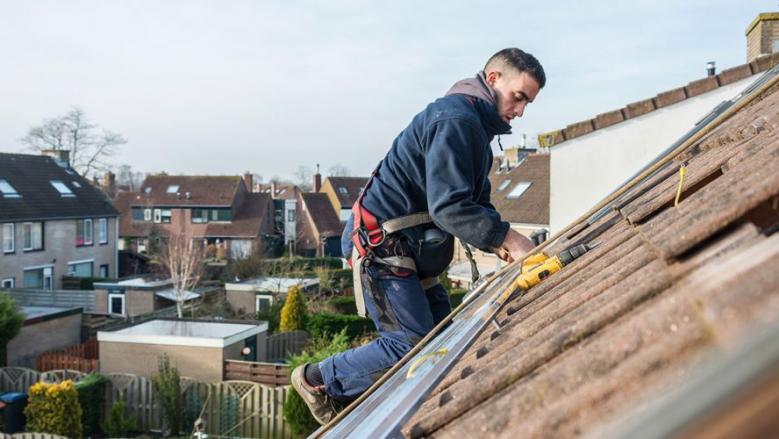
An Energy-Efficient Home Can Save the Planet - and Your Money
This article originally appeared in the Modern Wellness Guide.
By Barry Worthington
Homebuyers are motivated by keeping utility costs down and reducing their carbon footprint. While the real estate community is getting smart on energy and its impact on the bottom line, the energy industry and United States Energy Association (USEA) members are a bastion for great ways to keep power costs down and reduce impact on the environment.
Studies from California and Europe concluded energy-efficient homes have a resale value of up to 10 percent more than non-efficient homes. Many utilities are telling their customers how efficiently they consume electricity relative to their neighbors.
Each household consumes power somewhat differently and the cost of electricity varies by state. Regardless, homeowners across America can manage how they use that power to reduce electricity bills.
Many choices
While consumers have a choice in power generation sources in some states — coal, natural gas, renewables — consumers everywhere can manage how they use that power to reduce their electric bills.
One way is using energy-efficient appliances. New technology has significantly lowered appliance operating costs while maintaining or increasing performance. Consumer demand is driving the market for innovative appliances.
Another way to save energy and lower electric bills is making periodic updates to your home.
There are several renovation options available that can reduce the amount of hot or cold air that escapes, boost energy production, and serve as a renewable source of energy. These projects include installing new windows, a new HVAC system, and solar photovoltaic panel systems.
The environmental savings
While energy-efficient appliances help save money, they also help save the environment.
Modern efficient appliances that meet the Department of Energy (DOE) and Environmental Protection Agency (EPA) Energy Star standards use considerably less electricity and water than their predecessors. For example, new washing machines use 25 percent less energy and 70 percent less water than comparable units from 20 years ago.
When shopping for a new appliance, be sure to look for the bright yellow ENERGY STAR certification.
The DOE/EPA program has saved Americans four trillion kilowatt hours (kWh) of electricity and has helped reduce greenhouse gas emissions by 3 billion metric tons. In 2017 alone, the program helped Americans save $30 billion in energy costs, and it estimates that energy efficient appliances can help the average household save over $500 per year, an amount that will increase as energy-saving technology improves.
Where to start
If you are undecided about which appliances to replace first, look no further than your laundry room.
The dryer and washer combine to use over 1,400 kWh of energy per year, and only your HVAC system consumes more.
An ENERGY STAR dryer uses 20 percent less energy than standard models. That means if all Americans used energy-efficient dryers, they could save a combined $1.5 billion each year. ENERGY STAR washers use 25 percent less energy than standard models and can save up to 2,000 gallons of water per year.
Your kitchen appliances might also be wasting electricity. Due to the longevity of refrigerators, many people have older models that pale in comparison to the energy-saving capabilities of today’s units.
In the United States, there are more than 69 million refrigerators over 10 years old, which amounts to over $4.9 billion in waste every year.
If you want to use less water, new models of dishwashers can save almost 4,000 gallons of it over their lifetimes.
Maximizing efficiency
If nothing else is changed, homeowners should be aware of the best time to use their existing appliances.
When electricity use is peaking, power prices are higher. Peak hours are generally during the business day, and mid-peak or off-peak hours occur in the evening.
However, these hours vary depending on where you live, your utility, and the time of year. With a little bit of research and planning, any homeowner can determine the most cost-efficient time to use energy. Your local electric or natural gas distribution utility can help.
Larger home projects that help slash energy costs primarily focus on energy containment and production. Installing new insulation and windows help prevent cold and hot air from escaping, and the upgrades will be reflected in your lower monthly utility bills, as well as your resale value when it comes time to list your house.
Heating and cooling systems are often a source of wasted energy as they account for a whopping 43 percent of your energy bill, by far the largest contributor. ENERGY STAR recommends replacing your central air conditioning unit if it’s over 12 years old, a change that can save you 30 percent on cooling costs.
Going solar
Solar panel systems, which have become more pervasive, can help increase home value, reduce the home’s carbon footprint, and lower energy costs.
According to EnergySage, a company that matches homeowners with solar installers, the average cost to install a solar panel system is $12,600, which is recouped after 11 years of paying no utility bill. It is estimated that the resale value of homes with solar systems increase by $22,680 – nearly double the price of the original system.
While comparisons are complicated by a variety of factors, some studies suggest adding a solar photovoltaic system can significantly add to home appraisals. In some circumstances, an appraisal can increase by twice as much as what the system cost, after tax credits and incentives.
Regardless of the motivation, demand for energy-efficient homes is on the rise.
